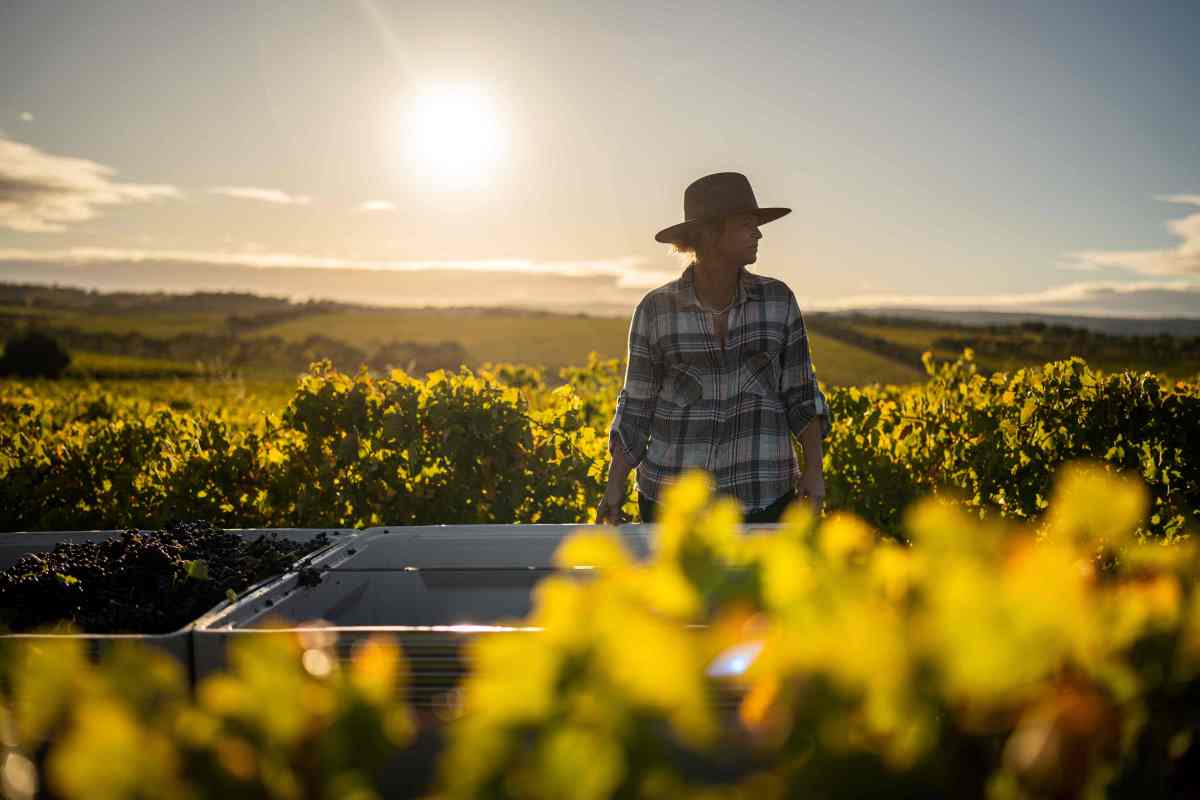On International Women’s Day every year, the voices and stories of women across the world are celebrated, as we address the issues that cause gender inequality and diversity. But despite these issues remaining, such voices and stories take a backseat once the day is done.
We think it’s worth doing the opposite and actively challenging the issues that create these gaps in our industry, which is why we launched our weekly Wednesday Women series, where we profile the stories of the inspiring women in this great and wide industry.
Today we speak with Oliver’s Taranga Director Corrina Wright, a sixth-generation vigneron with deep roots in McLaren Vale, and yet a reputation that has been built on a grape far from Australia’s traditional varieties.
Dubbed the Queen of Fiano, Wright first encountered the variety in the early 2000s when Coriole’s Mark Lloyd asked her family to plant some. There were only a handful of bottles available in Australia at the time for Wright to explore, but those few were enough to spark a passion that would shape her career.
Seeing how this Italian variety could thrive in her own backyard, Wright began her pioneering work with Fiano. While she doesn’t remember who first coined the nickname Queen of Fiano, she’s embraced it with conviction.
“I have been an early (and loud) proponent of the variety for sure, so if that comes with a crown, I’ll take it,” Wright told The Shout.
“I think once I started making Fiano, and I saw how well it went with food and our lifestyle and our vineyard, it became a no brainer. It just grew and grew in popularity with our customers, and then restaurants, sommeliers and bottle shops.
“In McLaren Vale we are coastal, but have a warm climate, so aren’t super suited to cooler climate white varieties like Chardonnay and Savuignon Blanc, as the acid drops out too fast during ripening. Fiano holds its natural acidity, has great texture and flavour, which suits our coastal lifestyle and the way we eat. It’s also really drought tolerant, so makes perfect sense in the changing climate,” Wright continued.
“The other reason I love it and it has become a focus is its versatility – I am able to make a traditional method sparkling from it, as well as a delicious couple of still wines in very different styles. It can work well with a number of different winemaking treatments and stylistic choices and is always an adventure.”
Pushing the boundaries of Australian wine
When Wright first began to champion Fiano, others were doubtful – unsure whether consumers would know how to pronounce it, and often unwilling to take a chance on a less traditional variety. But Wright persisted, and two decades later celebrates just how far Fiano has come in Australia.
“We think there are around 70 or so producers in Australia now, and more are joining the Fiano train each vintage. We have seen it go pretty much from cellar door only, into some restaurants, then many restaurants and then bottle shops.
“I think it has really resonated with restaurants, chefs and somms as it is an incredibly food-friendly variety – with its texture and acid drive and lovely savoury quality. Producers have embraced it due to its suitability to the vineyard and our climate, as much as the demand being there from consumers,” she explains.

Wright’s love of Fiano stems not only from its vibrant, textural character, but also from a desire to champion greater diversity in Australia’s vineyards.
“I think diversity is always good,” says Wright. “It helps ensure that we have some level of climate change mitigation, as much as being able to shift with changing consumer preferences and food/lifestyle.
“I think the Australian Alternative Varieties Wine Show, held in Mildura each year, has been key in educating producers and consumers alike about the breadth of varietals there are outside the few ‘traditional’ predominantly French varietals that made their way to Australia originally.”
Wright is clear in her belief that wine should be bold in its diversity, and her love of alternative varietals doesn’t stop at Fiano.
“We have just released our second Falanghina, which is grown in the same region as Fiano in Italy. It also has a lovely natural acidity and also brings a honeydew or rockmelon type of character and a textural element,” says Wright.
By exploring alternative varieties, Wright hopes to inspire other winemakers to push the boundaries of what Australian wine can be.
“Planting a vineyard is a big and long-term investment, and risk taking isn’t for everyone, but I find that there is often just as much risk in doing things the same way they have always been done.”

